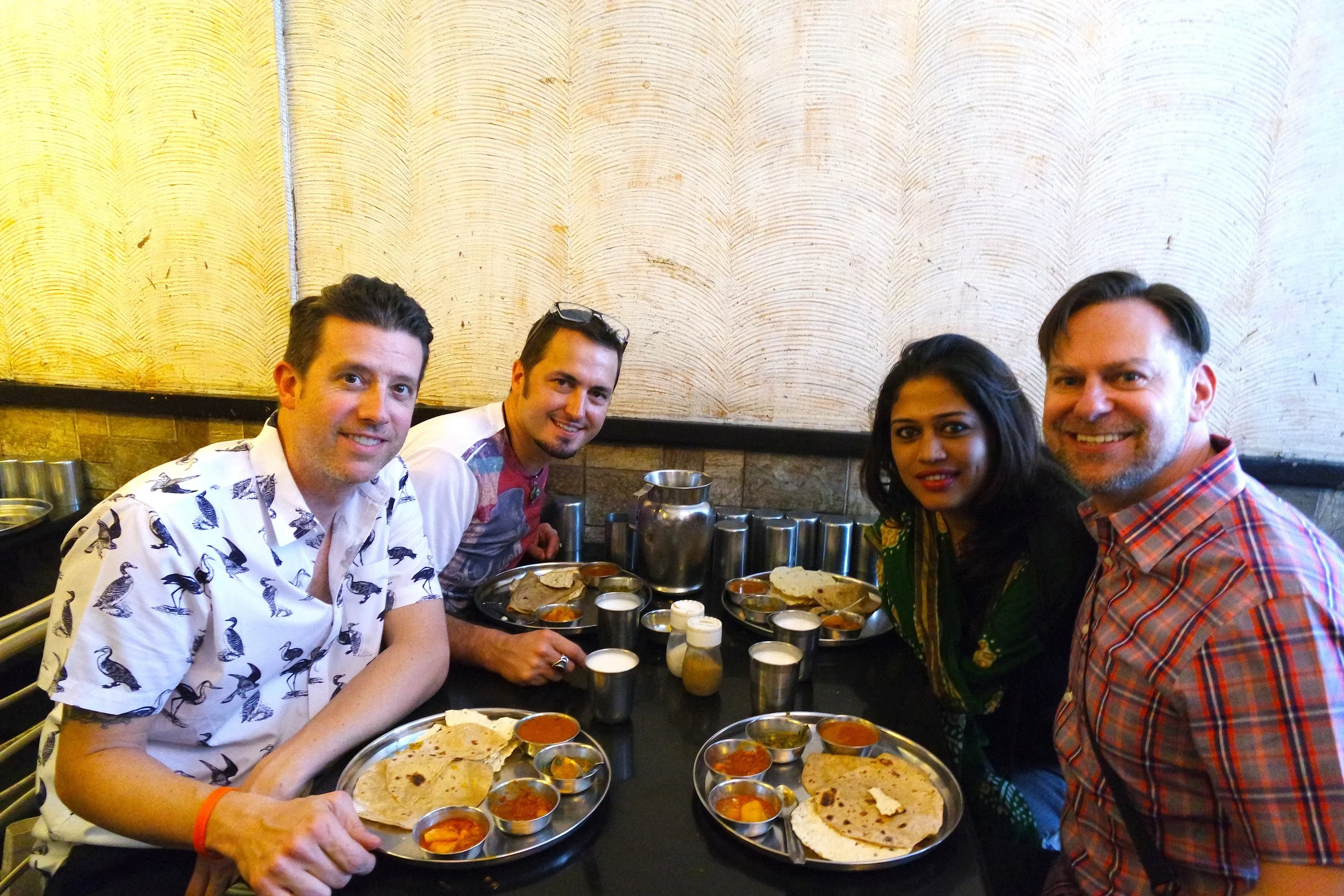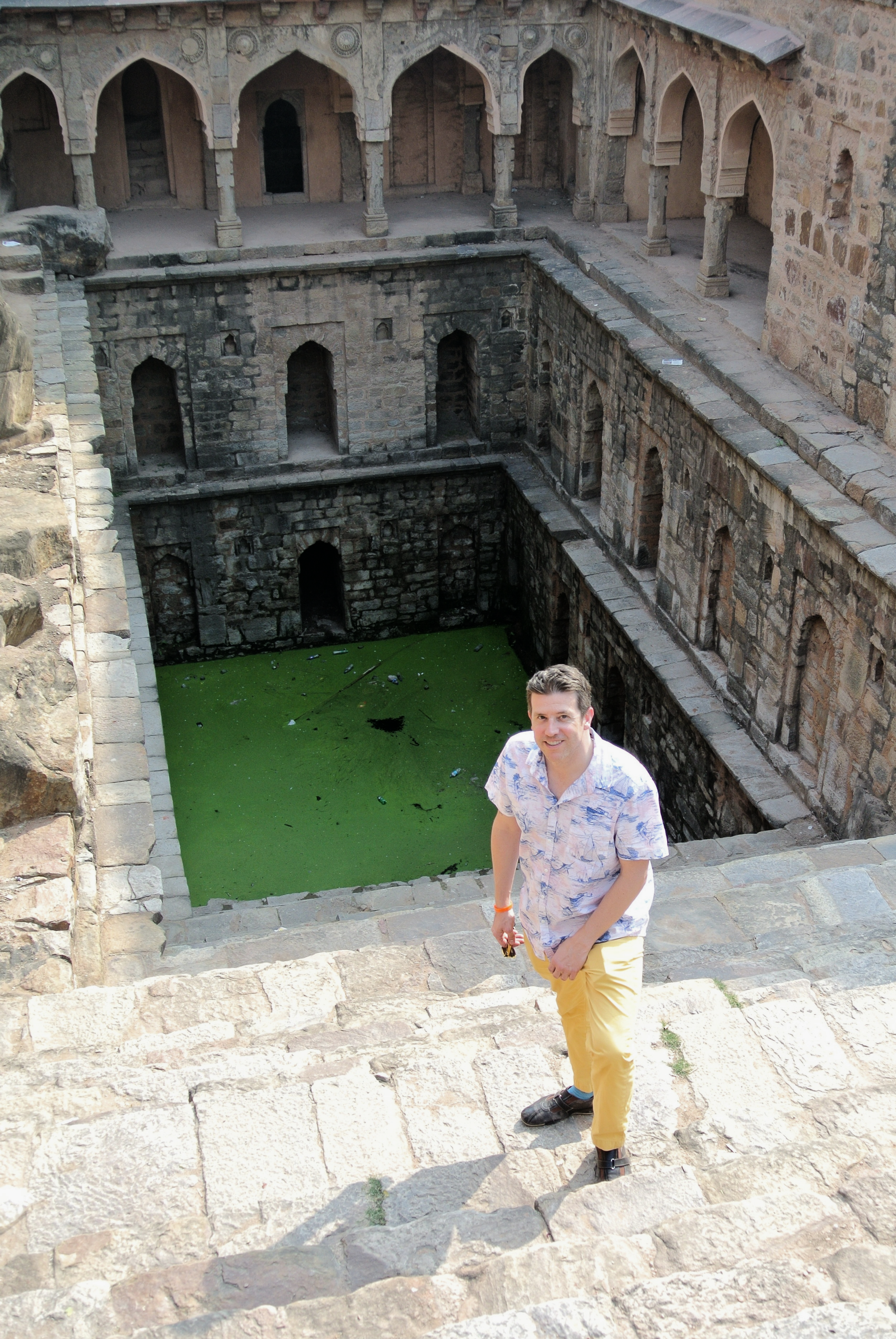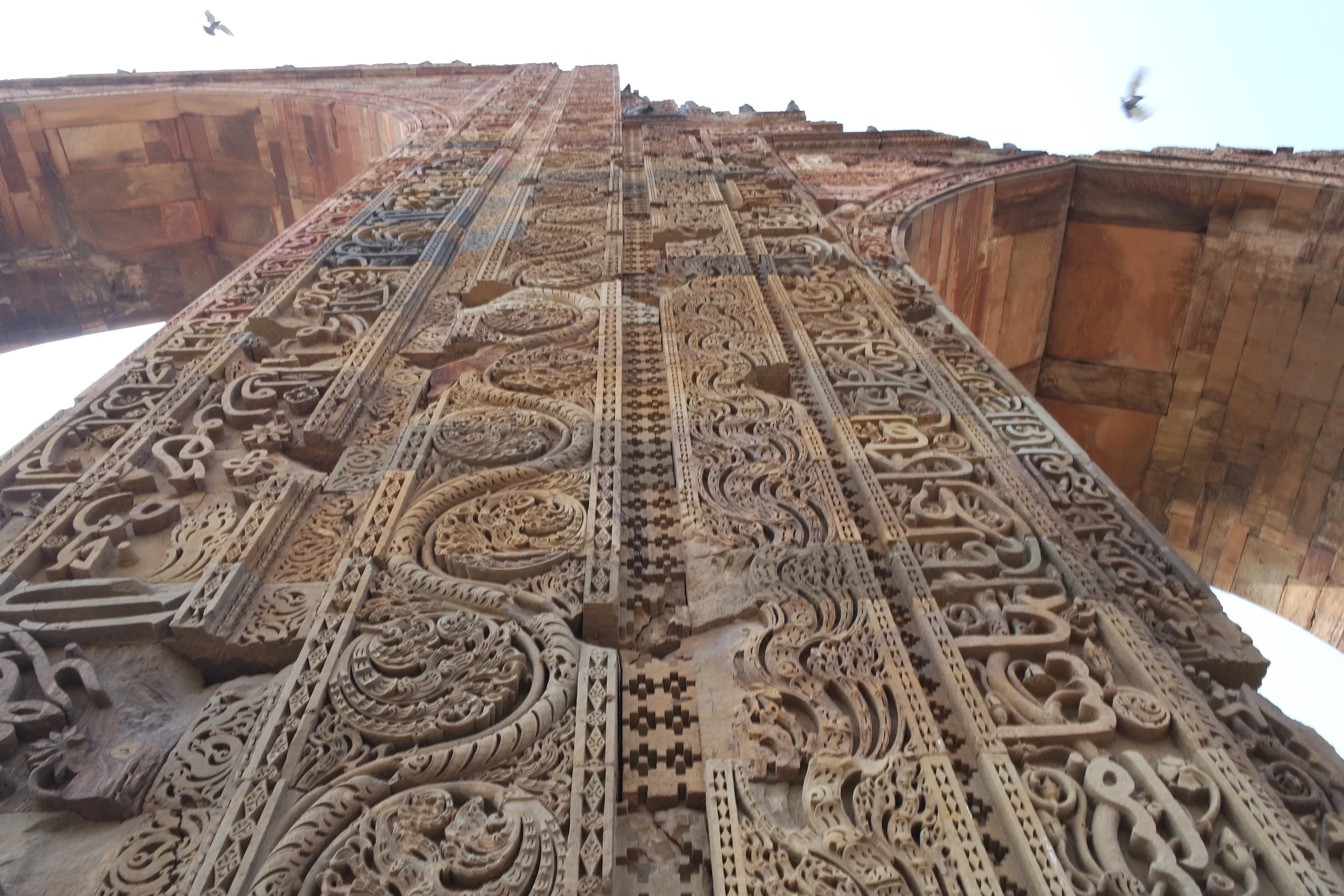Darkness turned to daylight as we awaited our driver. At least we had stray dogs to keep us company
Our road trip from Baroda to Dungarpur taught us not to expect your driver to speak English, show up on time or care about your sanity.
We weren't having any luck finding a driver who spoke English. (Prakash informed us that people who spoke English got the good jobs, and apparently “chauffeur” doesn’t fit into that category.)
An online search revealed a company called TaxiForSure. It seemed professional. It was also pretty much our only option. So we arranged transport to Dungapur. We requested a pick-up of 5 a.m. According to Google Maps, it’s a pretty straightforward four-hour drive from Baroda.
“A sullen, if handsome, 20-something driver showed up, playing what seemed to be techno versions of Bollywood music blared at full volume.”
At 5 the next morning, our friend and host George got a confirmation text from TaxiForSure, which provided the driver’s name, license plate number and estimated arrival time.
A few minutes later, he received a call from someone at TaxiForSure, who regretted to inform us that our original driver would not be coming — his car broke down.
I’d like to point out that no matter how much you try to plan, things can change unexpectedly (and inevitably, it seems), for India moves in its own unpredictable way.
We were waiting outside in front of George’s apartment building (he calls it his “tenement”). George saves his kitchen scraps to leave outside for the cows. As he was tossing a bag onto the heap, a neighbor who was up early yelled at him, telling him not to just throw it there — that there’s an actual place to leave food scraps down the street near the ashram. The neighbor was just doing his part to attempt to reduce the ridiculous amount of garbage strewn about. Indeed, everywhere you go, you see cans, paper and plastic bags picked at and chewed on by rats, jackdaw birds, stray dogs and cows.
How “OK, OK” Can Mean Anything But
We waited. George called back after a half-hour had passed, and then again every 15 minutes. The conversations went something like this:
“The driver is in the area.”
“The driver is very close.”
“The driver is 3 to 5 minutes away.”
“The driver is 2 to 3 minutes away.”
George hung up in a huff. “Indians will always tell you, ‘OK, OK,’” he said. “But that doesn’t mean anything. It can mean he’s hours away, or he could be here in 5 minutes. I’ve learned they tell you what you want to hear — even if it’s not the truth.”
Two hours in total had passed before George received another text from TaxiForSure.
Your taxi has arrived.
It was now 7 a.m.
Beep! Beep! A sullen, if handsome, 20-something driver named Pankach, who only spoke Gujarati showed up, playing what seemed to be techno versions of Bollywood music blared at full volume, which we endured the entire trip.
Before we left Baroda, he pulled the car over, and a man approached and gave him a bag full of clothes. Then our road trip was in full swing.
Road Trippin'
Once we were outside the city limits, the scenery changed, and we began to pass rural homes, which were transformed into hand-painted advertisements for the sturdy but humble materials cement and brick.
Many of the signs touted Ambuja Cement. The company's logo is a comically proportioned man with a tiny head and a ginormous right bicep embracing a pair of buildings.
Elaborate conical Hindu temples dotted the landscape, confections in bubblegum pink, white, mint and lemon yellow. Cloth flags atop spires fluttered in the breeze.
We weren't sure we were ever going to make it. But we were finally en route to Dungapur, otherwise known as the City of Hills, located at the southernmost Aravalli mountains of Rajasthan.
We almost got used to the Bollywood Molly dance party in the car. Almost. –Duke
“No matter how much you try to plan, things can change unexpectedly (and inevitably, it seems), for India moves in its own unpredictable way.”






















































